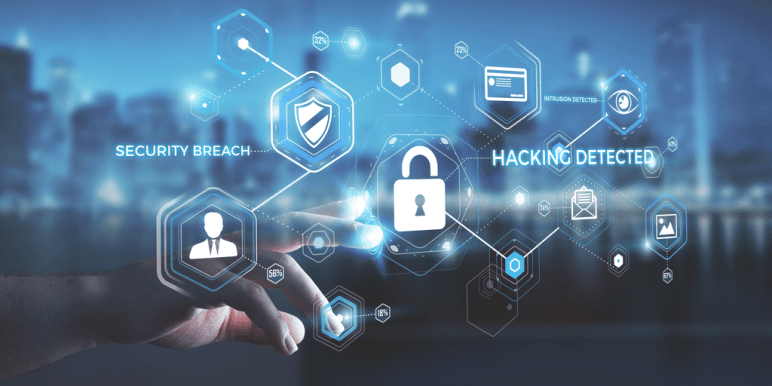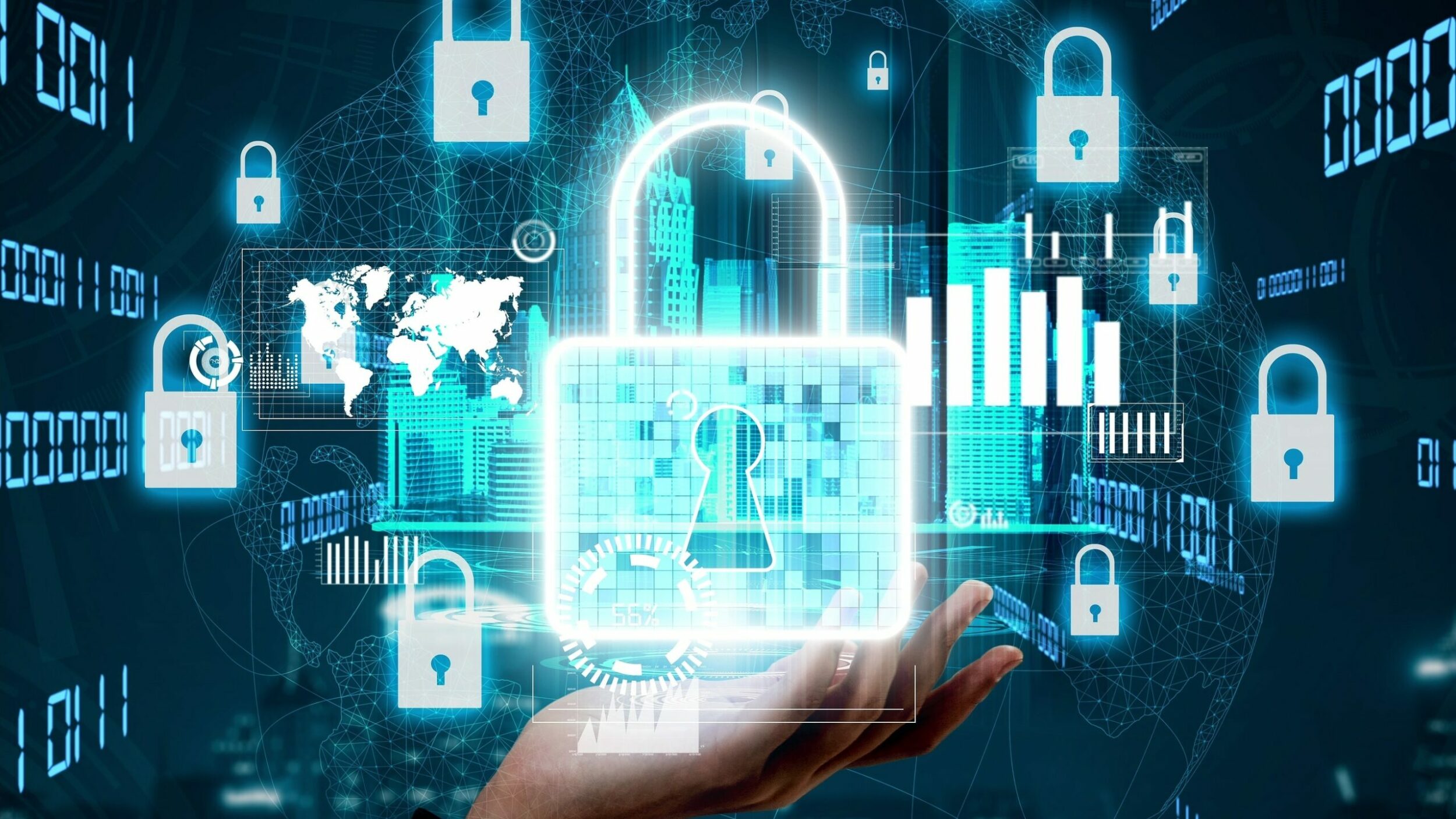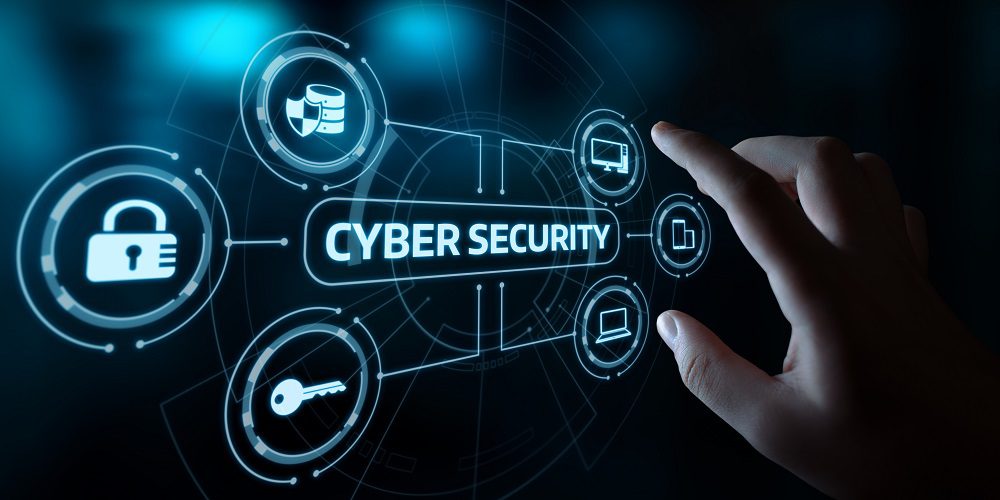Cybersecurity is the protection of internet-connected systems against cyber threats such as hardware, software, and data. Individuals and businesses utilise the method to prevent illegal access to data centres and other digital systems.
A robust cybersecurity strategy can provide a good security posture against hostile attacks aimed at gaining access to, altering, deleting, destroying, or extorting an organization’s or user’s systems and sensitive data. Cybersecurity is also important in thwarting attacks that try to disable or impair the operation of a system or device.
What Is the Significance Of Cybersecurity?

With an expanding number of users, devices, and programmes in contemporary organisations, as well as an increasing deluge of data, most of it sensitive or secret, the relevance of cybersecurity is growing. The increasing volume and skill of cyber attackers and attack strategies exacerbate the situation. See Apple Security Update | How to remove Apple Security Scam From IOS.
What Are The Components Of Cybersecurity, And How Does It Function?
The cybersecurity area is divided into numerous components, each of which must be coordinated inside the company to ensure the effectiveness of a cybersecurity programme. These parts are as follows:
- Application safety
- Data or information security
- Network safety
- Business continuity/disaster recovery strategy
- Operational safety
- Cloud safety
- Security of critical infrastructure
- Physical safety
- Education of end users
Maintaining cybersecurity in an ever-changing threat landscape presents a challenge for all companies. Traditional reactive tactics, in which resources were directed toward safeguarding systems against the most serious known risks while less serious dangers went undefended, are no longer adequate. A more proactive and flexible strategy is required to keep up with shifting security dangers. Several important cybersecurity advisory bodies provide assistance. To guard against known and unexpected risks, the National Institute of Standards and Technology (NIST) suggests using continuous monitoring and real-time assessments as part of a risk assessment framework.

What Are The Advantages Of Cyber-Security?
The following are some of the advantages of developing and sustaining cybersecurity practices:
- Businesses need cybersecurity to protect themselves from cyberattacks and data breaches.
- Data and network protection
- Unauthorized user access is avoided.
- Improved recovery time following a breach.
- End-user and endpoint device security.
- Compliance with regulations
- Continuity of operations
- Improved developer, partner, customer, stakeholder, and employee trust in the company’s reputation.
What Are The Types Of Cybersecurity Threats?

Keeping up with new technology, security trends, and threat information is a difficult undertaking. It is required to safeguard information and other assets against cyberthreats, which come in a variety of ways. The following are examples of cyberthreats:
- Malware is a type of harmful software that may exploit any file or application to damage a computer user. Worms, viruses, Trojans, and spyware are examples of this.
- Ransomware. It involves an attacker encrypting and locking the victim’s computer system files and demanding cash to decrypt and unlock them.
- Social engineering is a type of attack that uses human contact to deceive users into violating security protocols in order to obtain sensitive information that is normally protected.
- Phishing is a type of social engineering in which fake email or text messages are delivered that appear to be from legitimate or well-known sources. The objective of these communications, which are frequently random assaults, is to steal sensitive data, such as credit card or login information.
- Spear phishing is a sort of phishing assault that targets a specific user, organisation, or company.
- Insider risks are defined as security breaches or losses caused by humans, such as workers, contractors, or consumers. Insider danger can be malicious or careless.
- A DDoS assault is one in which several systems interrupt the traffic of a single system, such as a server, website, or other network resources. Attackers can delay or damage the system by flooding it with messages, connection requests, or packets, preventing genuine traffic from accessing it.
- APTs are long-term targeted assaults in which an attacker infiltrates a network and remains unnoticed for extended periods of time in order to steal data.
- Man-in-the-middle (MitM) attacks include an attacker intercepting and forwarding messages between two parties who believe they are interacting with one another.
Botnets, drive-by-download assaults, exploit kits, malvertising, vishing, credential stuffing attacks, cross-site scripting (XSS) attacks, SQL injection attacks, business email compromise (BEC), and zero-day vulnerabilities are examples of other prevalent attacks.
What Are The Most Pressing Cybersecurity Issues?
Hackers, data loss, privacy, risk management, and changing cybersecurity techniques all provide ongoing challenges to cybersecurity. The number of cyberattacks is unlikely to fall in the foreseeable future. Furthermore, increasing attack vectors, such as the emergence of the internet of things (IoT), raise the need to safeguard networks and devices.
The changing nature of security dangers is one of the most difficult aspects of cybersecurity. New attack channels emerge as new technologies emerge and technology is exploited in new or different ways. It can be difficult to keep up with the constant changes and developments in assaults, as well as to update strategies to guard against them. Concerns include ensuring that all aspects of cybersecurity are kept up-to-date in order to defend against any vulnerabilities. This can be especially challenging for smaller firms that lack people and in-house resources.
Furthermore, corporations can collect a large amount of prospective data about individuals who utilise one or more of their services. As more data is collected, the probability of a cybercriminal attempting to steal personally identifiable information (PII) increases. For example, a company that saves personally identifiable information on the cloud may be the target of a ransomware assault. Organizations should do all possible to avoid a cloud compromise.
Employees may carry malware into the office on their computers or mobile devices, so cybersecurity strategies should include end-user education. Employees may help keep their firm secure from cyberthreats by receiving regular security awareness training.
Another cybersecurity concern is the scarcity of skilled cybersecurity workers. As the volume of data gathered and used by organisations expands, so does the demand for cybersecurity personnel to evaluate, manage, and respond to problems. (ISC)2 estimates a 3.1 million-person workforce gap between needed cybersecurity positions and security specialists.
What Role Does Automation Play In Cybersecurity?
Automation has become an essential component in protecting businesses from the rising quantity and sophistication of cyberthreats. Using artificial intelligence (AI) and machine learning in areas with large amounts of data can enhance cybersecurity in three ways.
- Detection of threats AI technologies can examine data to identify existing hazards and forecast new ones.
- response to a threat AI platforms may also generate and automatically implement security safeguards.
- Human enhancement Security professionals are frequently overburdened with warnings and repeated activities. AI can assist in reducing alert fatigue by automatically triaging low-risk warnings and automating large data analysis and other repetitive operations, freeing up people for more complex duties.
Other advantages of cybersecurity automation include attack categorization, malware classification, traffic analysis, compliance analysis, and more.
Cybersecurity Vendors And Technologies
Cybersecurity vendors often provide a wide range of security products and services. The following are examples of common security tools and systems:
- Management of identity and access (IAM)
- Firewalls
- Endpoint security
- Antimalware
- Intrusion detection and prevention systems (IPS/IDS)
- Preventing data loss (DLP)
- Detection and reaction to endpoints
- Management of security information and events (SIEM)
- Tools for encryption
- Scanners for vulnerabilities
- Virtual private networks (VPNs)
- The platform for cloud workload protection (CWPP).
- Cloud access security broker (CASB)
Check Point, Cisco, Code42, CrowdStrike, FireEye, Fortinet, IBM, Imperva, KnowBe4, McAfee, Microsoft, Palo Alto Networks, Rapid7, Splunk, Symantec, Trend Micro, and Trustwave are among the well-known cybersecurity firms.
What Types Of Jobs Are Available In Cybersecurity?
As the cyber threat environment evolves and new dangers arise, such as IoT risks, personnel with cybersecurity knowledge and hardware and software expertise are in high demand.
- The chief information security officer (CISO) is the person in charge of implementing the security programme throughout the company and overseeing the operations of the IT security department.
- The person in charge of a company’s physical and/or cybersecurity is known as the chief security officer (CSO).
- Security engineers safeguard corporate assets from threats by focusing on quality control inside the IT infrastructure.
- Security architects are in charge of an enterprise’s critical infrastructure planning, analysis, design, testing, maintenance, and support.
- Security analysts are responsible for a variety of tasks, such as developing security measures and controls, securing digital information, and conducting internal and external security audits.
- Penetration testers are ethical hackers that evaluate the security of systems, networks, and apps for flaws that hostile actors may exploit.
- Threat hunters are threat analysts that seek to identify and mitigate vulnerabilities and threats before they affect a firm.
Security consultants, data protection officers, cloud security architects, security operations management (SOC) managers and analysts, security investigators, cryptographers, and security administrators are some more cybersecurity occupations.

